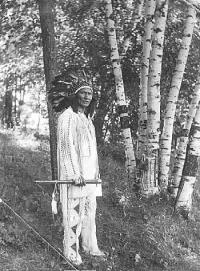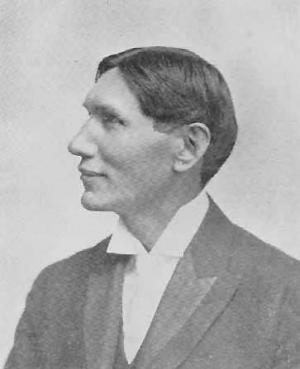 Reprinted from MNopedia: Minnesota's Encyclopedia.
Reprinted from MNopedia: Minnesota's Encyclopedia.
Author Molly Huber
Famed author and lecturer Charles Eastman was raised in a traditional Dakota manner until age fifteen, when he entered Euro-American culture at his father's request. He spent the rest of his life moving between American Indian and white American worlds, achieving renown but never financial security.
The boy later known as Charles Alexander Eastman was born on February 19, 1858, near Redwood Falls, Minnesota. His mother, Wakantankawin (Sacred Woman) or Mary Nancy Eastman, daughter of well-known painter Seth Eastman, only survived her son's birth by a few months, so he was called Hakadah (the Pitiful Last). His paternal grandmother, Uncheedah, raised him, first in Minnesota and then, after the US–Dakota War of 1862, in Canada where his family had fled to safety.
In Canada, Hakadah was renamed Ohiyesa (the Winner) following a victory by his band in a lacrosse game. He was instructed in traditional Dakota lifeways by his grandmother and uncle, Mysterious Medicine. Ohiyesa's father, Ite Wakanhdi (Many Lightnings), and older brothers were thought killed in the aftermath of the US–Dakota War. However, they had survived, and in 1873, Ite Wakanhdi, then called Jacob Eastman, traveled north to find his youngest son and bring him back to the United States.
Ohiyesa was shocked by his father's sudden reappearance and request that he give up traditional Dakota ways. But Ohiyesa agreed to follow his father to his homestead in Flandreau, Dakota Territory, and adopt white ways, taking the name Charles Alexander Eastman.

In Flandreau, Eastman started formal schooling, which he continued at various institutions for the next seventeen years. He moved from Indian schools such as Santee Normal in Nebraska to all-white colleges such as Beloit and Dartmouth. He completed his education in 1890 with a medical degree from Boston Medical School.
Eastman wanted to give back to his community as a reservation physician, so he applied to the Bureau of Indian Affairs and received an appointment to Pine Ridge Reservation in South Dakota. At Pine Ridge, he met Elaine Goodale, a teacher and published author, and they were married in 1891.
Eastman arrived at Pine Ridge in November 1890, just before the tragic events at Wounded Knee on December 29. As the reservation's resident physician, he provided medical assistance to the day's few survivors and found his confidence in white culture severely shaken. Eastman's time at Pine Ridge was troubled overall and lasted only until 1893, when he left because of conflict with the Indian agent.
Eastman and his wife then moved to St. Paul, where he attempted to set up a private medical practice. Unsuccessful, he took a job with the YMCA as supervisor of their Indian programs in the western United States and Canada.
He tried reservation medical practice again in 1900, at Crow Creek Reservation, but resigned after only two years due to conflict with his supervisors. In 1903 he was offered another job within the Indian service: to assist Dakota in establishing family names that would translate well into English and could be used legally. He continued this work for six years.
In 1902, Eastman became a published author. His first book, Indian Boyhood, is a compilation of stories he had been telling his own children about his childhood. The book was immediately popular. Encouraged by its success, Eastman continued to write for children and adults. He published thirteen books in all, two co-written with his wife, who served as his editor.
Largely because of his publishing success, Eastman became a noted speaker and traveled widely. In 1910, he took a job with the Boy Scouts of America as their Indian advisor. Inspired by this experience, he opened a summer camp for children in New Hampshire that he and his family ran from 1915 to 1921.
In 1921, Eastman and his wife permanently separated after many unhappy years together and never saw each other again. During the remaining eighteen years of his life, Eastman continued to lecture but no longer published. He increasingly withdrew from white society, building himself a small cabin in the woods of upstate New York, where he spent most of his time. He died of heart failure in 1939 while visiting his son, Ohiyesa II, in Detroit, Michigan.
 Reprinted from MNopedia: Minnesota's Encyclopedia.
Reprinted from MNopedia: Minnesota's Encyclopedia. In Flandreau, Eastman started formal schooling, which he continued at various institutions for the next seventeen years. He moved from Indian schools such as Santee Normal in Nebraska to all-white colleges such as Beloit and Dartmouth. He completed his education in 1890 with a medical degree from Boston Medical School.
In Flandreau, Eastman started formal schooling, which he continued at various institutions for the next seventeen years. He moved from Indian schools such as Santee Normal in Nebraska to all-white colleges such as Beloit and Dartmouth. He completed his education in 1890 with a medical degree from Boston Medical School.



